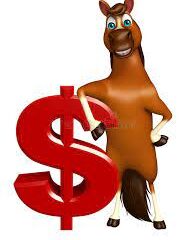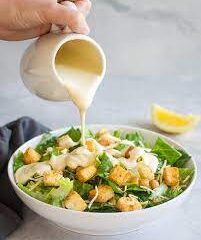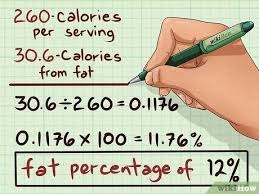The Many Uses of Ration Balancer


Ration balancers are one of the three classes of commercial horse feeds along with concentrated and complete. Ration balancers are the most flexible of the three but cause a great deal of confusion among users because it is misunderstood so let’s see if we can’t clear up some of the myths and mystery of ration balancers.
As the name suggests a ration balancer is designed to balance rations but what exactly are we talking about?
As we all know the very best source of nutrition for our horses is forage, grass, hay or some type of forage replacement. Forage should be the primary source of calories for our domestic horses but forage rarely has everything today’s horse needs to live into their thirties with limited veterinary intervention. This is where ration balancer comes into play.
In it’s basic and ideal application we would add ration balancer to a horse that was maintaining weight on forage alone. Easy. So why is it so confusing? Isn’t that what all feed is for? To provide essential nutrients for horses in addition to hay and pasture?
Yes, but the difference is that if your horse is in good weight or perhaps even a tad on the chubby side a ration balancer will provide everything the horse needs without too many extra calories. Think of a ration balancer as a protein shake for us. Everything we need without all the carbs, fat and associated calories.
I’ve provided two tags for you to compare the difference between a ration balancer, Purina Enrich and a concentrated feed, Purina Healthy Edge. Enrich is designed to be fed to a 1,000 pound horse at a daily rate of one pound while the Healthy Edge is designed around a three pound daily minimum. So if your horse is getting too chubby on three pounds of Healthy Edge it’s time to switch to Enrich.
This brings me to the first improper use of balancer, not using one! I have run into many owners who have air ferns and only feed a cup of feed like Healthy Edge otherwise their horse would become obese. Unfortunately by feeding under three pounds of Healthy Edge daily you are shortchanging vital nutrients.
Let’s look at the tag to see the reason balancer was developed.
Starting from the top we have protein. This is the first line of the tag and it stops owners in their tracks because it proclaims “32% Protein!” Eek! That much protein will make my horse hot and ruin it’s kidneys!
This is material for another post but protein will not kill your horse. It really doesn’t make him hot either but there’s more to that story.
But let’s for argument’s sake say too much protein was bad for our horses. We need to do a little math here but I’ll keep it simple. Horses don’t eat percentages, they eat feed by weight. The Enrich is 32% protein but our 1,000 pound horse only eats one pound.
The Healthy Edge is “only” 12.5% protein but our horse needs a minimum of THREE pounds.
So if we do the math, 32% of 16 ounces (1 pound) nets 5.12 ounces of protein daily. On the other hand 12.5% of 48 ounces (3 pounds) of Healthy Edge nets 6 ounces of protein. This means that your horse is actually receiving MORE protein daily from the Healthy Edge. Don’t get hung up on the percentages.
Next on the list is a very important and often overlooked ingredient that is essential for good coat, hooves and everything else. Lysine. Lysine is an essential amino acid that horse can’t synthesize and so it must be ingested. Lysine is very important because it is the limiting amino acid for horses. Without enough lysine none of the protein a horse eats works. You will note that there is three times the Lysine in Enrich as Healthy Edge because they only eat one pound per day versus three.
We can skip a bit because fat and fiber are irrelevant in balancer since we want as little of that stuff as possible. Now let’s look at the next numbers that cause palpitations in owners of metabolic horses…starch and sugar.
Many people are hung up on NSC especially when they are feeding a metabolic horse (Cushing’s, insulin resistant, etc.). Somehow this magic number of 11% (or 10% or 12%) appeared as the be all end all for metabolic horses. Enrich is 15% NSC (starch + sugars) so am I an idiot when I recommend Enrich for metabolic horses?
Here comes that pesky math again. Purina Wellsolve L/S is only 11% NSC so it’s just what I should be feeding my metabolic horse. Ta da! Hang on…
Remember, Wellsolve is a concentrated feed and so must be fed at a minimum rate of 3 pounds per day. This means that your Cushing’s mare will be eating 5.28 ounces of NSC per day or more significantly 2.64 ounces per meal which is very low and well within the safe zone.
Our friend Enrich with 15% NSC (bad?) fed at a rate of 1 pound per day nets only 2.4 ounces of NSC per day or a tiny 1.2 ounces per meal. The Enrich which exceeds the magical 12% NSC number has a much lower glycemic impact on your metabolic horse.
Many metabolic horses are overweight so the Wellsolve contains 1,200 calories per pound for an additional 3,600 calories per day versus Enrich at only 1,500 of which most are protein.
The devil is always in the details.
So for a horse who maintains weight on forage alone balancer is the answer! Simple, yet balancer is still often misused. Here are some examples.
Balancer should not be used to directly manage weight. We feed balancer to overweight horse to save calories but you must never feed less than the recommended amount by weight. If your chubby AQH is eating one pound of Enrich per day and she’s still fat restrict her forage or pasture time. Cutting the balancer in half won’t help the weight and will rob her of essential nutrition.
Likewise adding balancer for weight gain will only result in a smelly stall because all the extra protein calories are being converted to ammonia and dumped overboard in urine.
SO here’s the rule on feeding balancer and weight management. If your horse is not maintaining weight on balancer alone AND is eating all the forage she can get then it may be time to switch to a concentrated feed. Again easy?
What about the “tweeners”, horses that need a few extra calories but will still gain weight on three pounds of concentrated feed? Most of these horses will make up the weight on some extra hay but if they still need something just add a cup or so of whatever concentrated feed is in the feed room.
Angel, the Appaloosa tends to get a hair ribby in January and February so I just add some of Raven’s complete feed on top of the balancer and call it a day. Never feed less than the full amount of balancer.
Except…
For economic and management reasons some boarding facilities use a good but generic feed for all the horses. This may be just fine for some or most of the horses but because of your horse’s age or workload the basic feed may not have enough nutrition for your horse. In this case, instead of figuring out eight different options of supplements just add a half measure of balancer and all your supplements will be covered. Easy.
I hope this demystifies the proper use of balancer for you.


